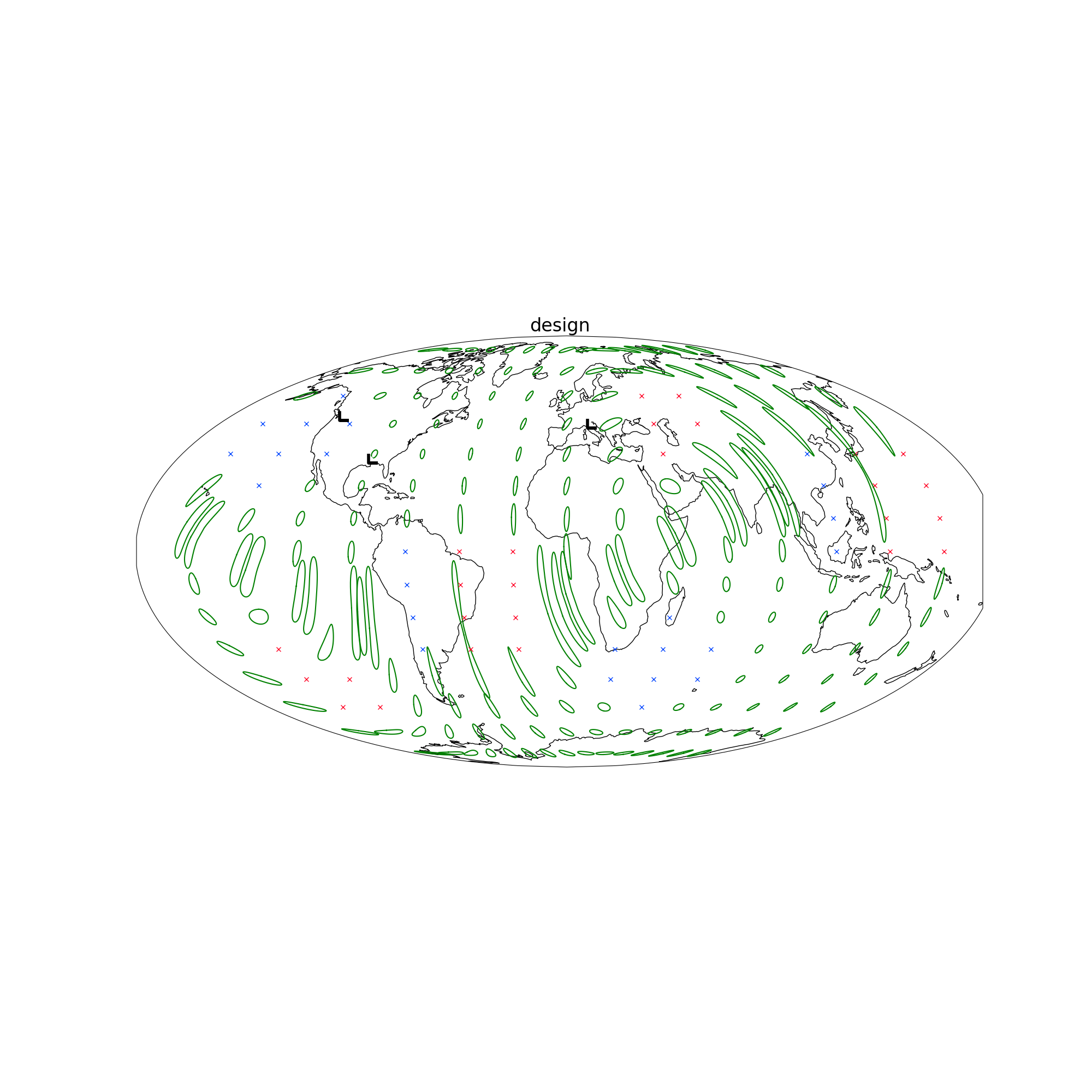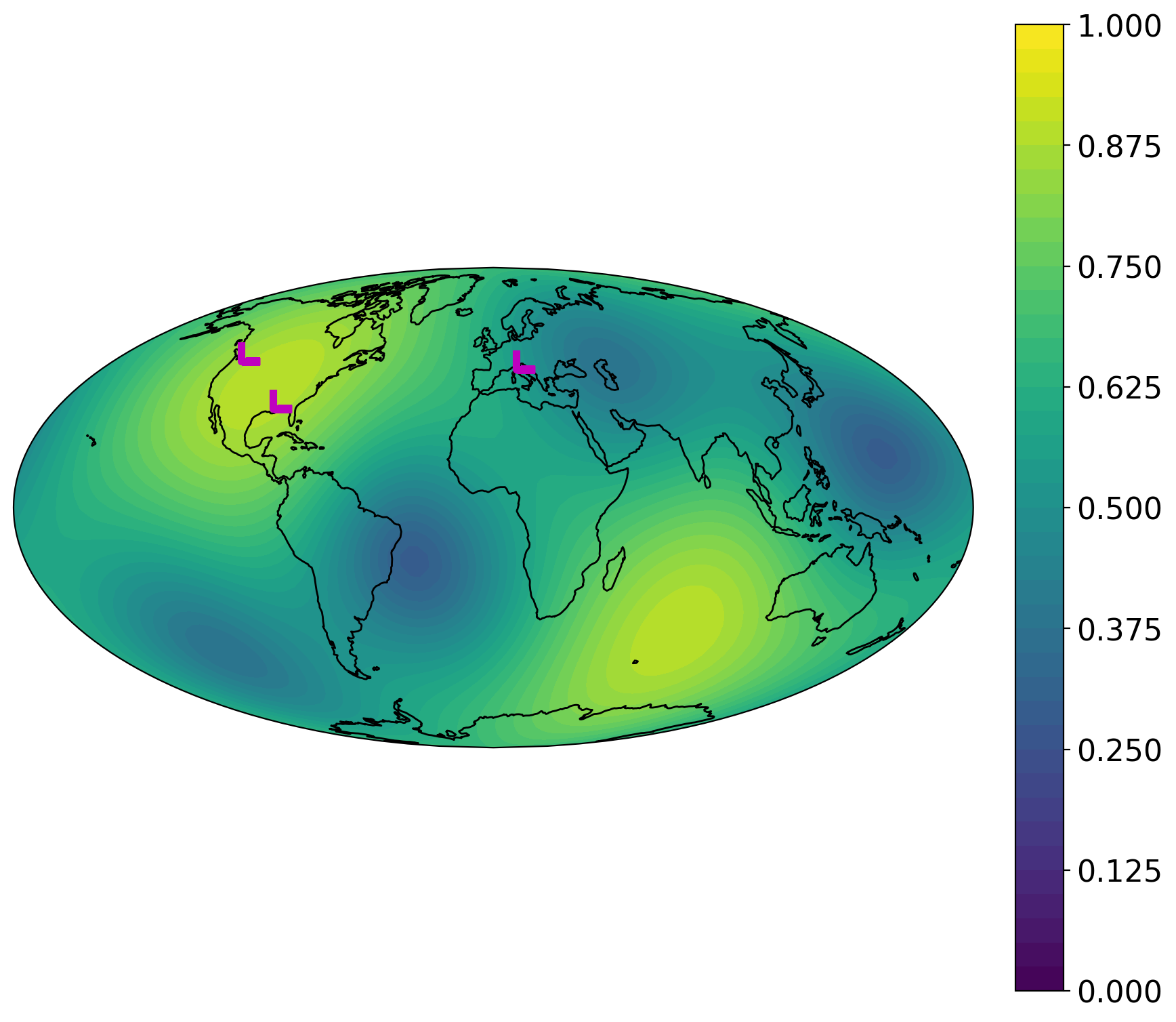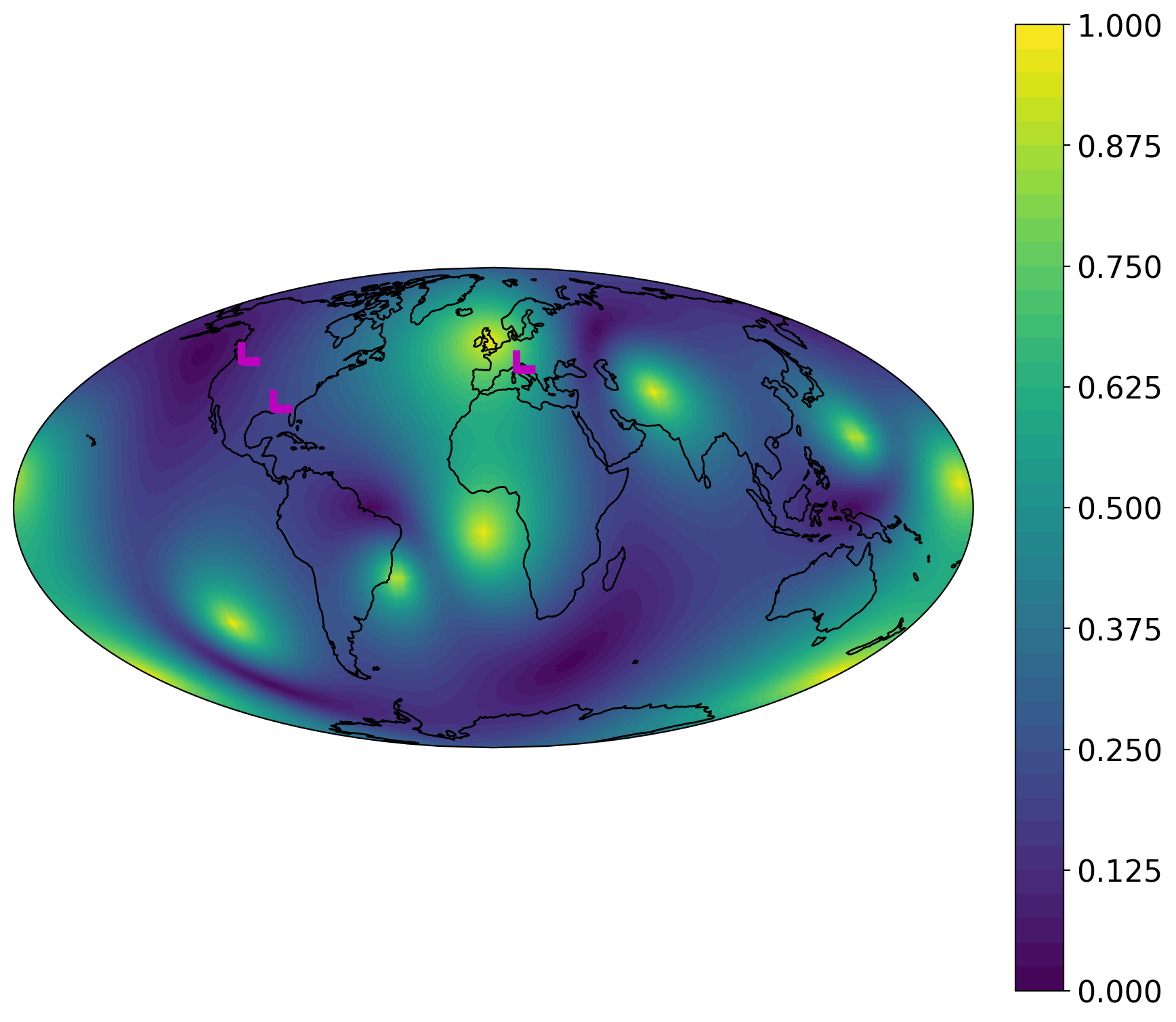Event Localization Examples
Overview
The primary way that a GW transient source is localized is through time of arrival information at the different detectors (see Triangulation of gravitational wave sources with a network of detectors for details). Inclusion of additional information, particularly relative amplitudes and phases at the different locations can serve to improve localization and remove some degeneracies (see Localization of transient gravitational wave sources: beyond triangulation). The Submodules module implements these analyses.
Example: Localization over the sky
In this example, we simulate a set of face-on binary neutron star mergers at a fixed distance and evaluate the localization accuracy for each event. The results are plotted as a set of ellipses in the sky.
The analysis is done by the simple_pe_localization_ellipses executable.
To see help for this executable please run:
$ simple_pe_localization_ellipses --help
Below is a plot showing localization ellispes for the default configuration (advance LIGO, Virgo detectors at design sensitivity):

Example: Network sensitivity over the sky
In this example, we calculate the sensitivity of a gravitational-wave detector network to transient signals at different locations in the sky. At each point, we calculate the overall sensitivity as well as the relative sensitivity of the network to the second GW polarization.
The analysis is done by the simple_pe_network_coverage executable.
To see help for this executable please run:
$ simple_pe_network_coverage --help
Below is a plot showing network sensitivity for the advanced LIGO, Virgo network at design, and also a plot of the relative sensitivity to the second polarization for the network over the sky.

